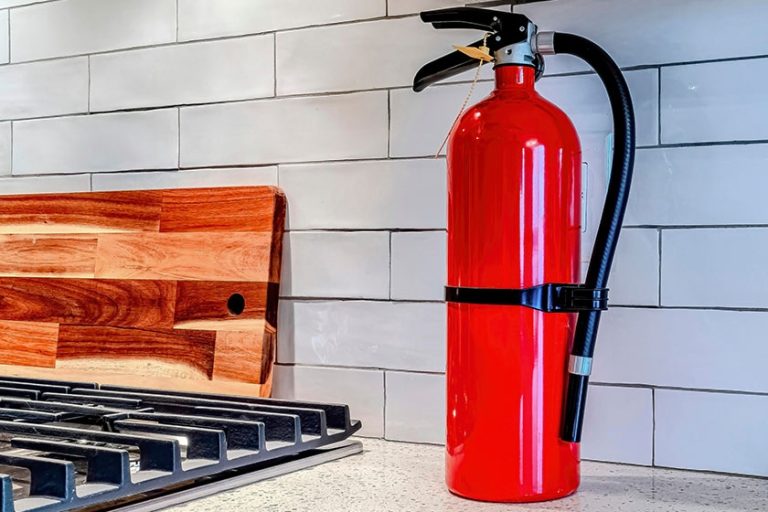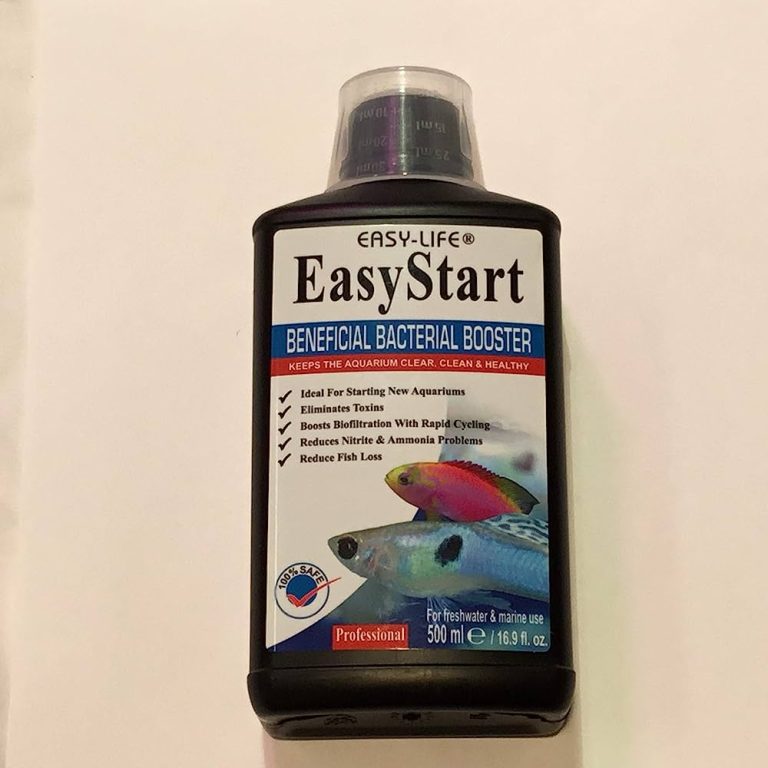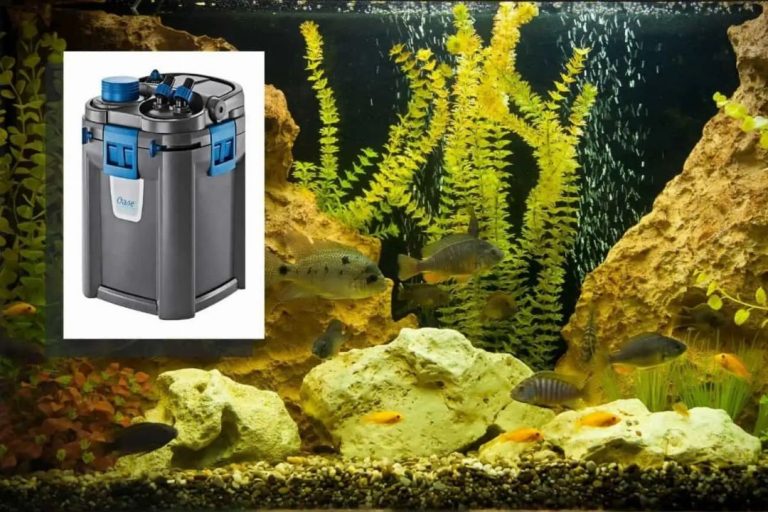What is Uv Ozone in Aquarium: Clearing the Water and Boosting Health
Uv ozone in aquarium is a sterilization process used to remove harmful bacteria, viruses, and parasites from water. The process combines ultraviolet light and ozone gas to kill microorganisms.
If you are an aquarium enthusiast, maintaining a healthy environment for your aquatic pets should be your top priority. The use of uv ozone in aquarium is becoming increasingly popular in recent years due to its effective nature. While most aquarium filters are designed to remove debris and pollutants that can harm your fish, they are not always effective in removing microorganisms that can cause severe harm.
This is where uv ozone comes in handy. In this article, we will explore what ultraviolet sterilization is and how it works. We’ll also look at the benefits of using uv ozone in your aquarium when it comes to creating a safe living environment for your fish and other aquatic pets.

Credit: www.amazon.com
How Does Uv Ozone Work In Aquariums?
Aquariums are fascinating ecosystems that require careful attention and maintenance to keep the fish and other inhabitants healthy and happy. One of the most essential aspects of keeping an aquarium healthy is ensuring proper water quality. That’s where uv ozone comes in.
In this blog post, we’ll explore what uv ozone is, how it works in aquariums, and its benefits and potential disadvantages.
Understanding The Chemistry Of Uv Ozone
Uv ozone is a type of water treatment that uses ultraviolet light and ozone gas to purify water. It works by breaking up organic molecules, such as algae and bacteria, through a process called oxidation. When uv light hits ozone gas, it creates a chemical reaction that produces highly reactive molecules called free radicals.
These free radicals then react with organic molecules in the water, breaking them down into harmless substances like carbon dioxide and water.
The Role Of Uv Ozone In Aquarium Water Quality
Maintaining good water quality is essential for the health and wellbeing of your aquarium’s inhabitants. Uncontrolled algae growth and harmful bacteria can wreak havoc on the aquarium’s ecosystem, leading to various problems like cloudy water, unpleasant odours, and unhealthy or sick fish.
Uv ozone technology is particularly useful for eliminating organic and bacterial pollutants in aquarium water, preventing them from harming the fish or other living organisms in the aquarium. It can help reduce the number of harmful microorganisms in the water column, thereby reducing the risk of disease outbreaks and other issues.
Benefits Of Using Uv Ozone In Aquariums
There are many benefits to using uv ozone technology in aquariums. Here are a few:
- Improved water clarity: Uv ozone technology can effectively remove particles that cause cloudiness and discolouration in the water, resulting in clearer, cleaner water.
- Reduced algae growth: As an oxidizing agent, ozone can kill algae and other microorganisms that cause excessive growth, creating a hostile environment for unwanted organisms.
- Elimination of harmful bacteria: Uv ozone can kill many types of bacteria, viruses, and other pathogens that cause diseases in fish and other aquatic animals.
Potential Disadvantages Of Using Uv Ozone In Aquariums
While the benefits of uv ozone are many, there are also some potential downsides to using this technology. Here are a few:
- Increased maintenance requirements: Installing a uv ozone system can increase the maintenance requirements of your aquarium. You’ll need to regularly clean and replace the uv bulb and monitor the ozone levels in the water.
- Impact on beneficial microorganisms: While uv ozone can be effective in killing harmful microorganisms, it can also harm beneficial bacteria that help maintain the aquarium’s ecosystem.
- Cost: Installing a uv ozone system can be expensive, especially for larger aquariums.
Using uv ozone technology in your aquarium can help increase water quality by reducing harmful microorganisms and organic pollutants. However, it is essential to weigh the benefits against the potential downsides before investing in a uv ozone system for your aquarium.
Installation Of A Uv Ozone System In Your Aquarium
Keeping your aquarium clean and healthy is crucial for the lives of your aquatic pets. It requires proper maintenance and the right tools to maintain water quality. A uv ozone system is a great addition to your aquarium to help you maintain a clean and healthy environment.
Here are some essential factors to consider when choosing and installing a uv ozone system in your aquarium.
Factors To Consider When Choosing A Uv Ozone System
When choosing a uv ozone system, there are several factors to consider to ensure the proper installation and maintenance of the system:
- Aquarium size: Select a uv ozone system that can handle the size of your aquarium.
- Flow rate: Consider the flow rate of your aquarium filter to determine the appropriate wattage of the uv ozone system.
- Type of uv lamp: Choose between a low or high-pressure uv lamp, depending on the specific needs of your aquarium.
- Additional features: Determine if you need an additional feature like a uv sterilizer, which can enhance the uv ozone system’s efficiency.
How To Install A Uv Ozone System In Your Aquarium
Installing a uv ozone system in your aquarium can seem intimidating, but it’s relatively simple. Here are some steps you can follow:
- Shut down all equipment: Turn off all the aquarium equipment to ensure the safety of your pets.
- Install the uv ozone system: Install the uv ozone system in a location where the aquarium water will pass through the system.
- Connect the system: Connect the system to the aquarium filter’s return line or any other equipment using the provided tubing.
- Power up the system: Plug in the uv ozone system and power on all equipment.
Troubleshooting Common Installation Problems
Even with proper installation, some issues may arise when installing a uv ozone system. Here are some typical installation issues and their solutions:
- System not working: Check if the power cord is plugged in correctly or if the uv lamp is broken.
- Water leaks: Ensure that all tubings and connections are secure and tightened correctly.
- Cloudy water: Check if the uv lamp is operating correctly and if the flow rate is appropriate.
Maintenance Requirements For A Uv Ozone System
Installing a uv ozone system is not only about set up and installation but also maintenance. Here are some of the maintenance requirements to ensure the optimal performance of your uv ozone system:
- Replace uv lamp: Replace the uv lamp annually or as recommended by the manufacturer to ensure effective operation.
- Clean the quartz sleeve: Clean the quartz sleeve regularly to prevent any buildup or blockage that may interfere with the lamp’s function.
- Check for water leaks: Regularly check all connections and tubes for any leaks and tighten loose connections.
A uv ozone system is an excellent addition to your aquarium to maintain water quality and keep your aquatic pets healthy. Installing the system correctly and maintaining it ensures maximum performance and longevity. Follow these guidelines, and you’ll enjoy a clean and healthy aquarium for a long time.
Which Fish And Aquatic Life Forms Benefit From Uv Ozone In The Aquarium?
Uv ozone in aquariums has become a vital aspect of aquatic pet care in recent years. Aquarium owners have started realizing the benefits of installing a uv ozone system in their tanks to create a healthier habitat for their aquatic friends.
Uv ozone is known to benefit a wide range of aquatic life forms, from fish to marine plants to corals. We will discuss which fish and aquatic life forms benefit the most from a uv ozone system in the aquarium.
Types Of Fish That Benefit Most From Uv Ozone
Not all fish are affected similarly by an installed uv ozone system in the aquarium. However, some are known to benefit significantly. Here are a few types of fish that benefit the most from uv ozone:
- Angelfish: Uv ozone prevents bacterial and fungal infections from spreading in the water, which can harm angelfish’s delicate fins and scales.
- Discus: These fish are highly sensitive to water quality, and a uv ozone system assists in maintaining a healthy and stable water environment for them.
- Neon tetra: They are prone to diseases, and uv ozone helps to kill any harmful microorganisms in the water, keeping them healthy.
Invertebrates And Corals That Thrive In A Uv Ozone System
In addition to fish, many invertebrates and coral species can also benefit from a properly installed uv ozone system. Some of the common types of corals and invertebrates that thrive in a uv ozone setup include:
- Brain and bubble corals: These are sensitive to water quality, and a uv ozone system assists in maintaining optimal water conditions for them.
- Anemones: They are susceptible to parasites and bacterial infections, but uv ozone eliminates the risks of these infections.
- Shrimp: Uv ozone kills harmful parasites and bacteria that infest the water, keeping the shrimp healthy and happy.
Understanding The Impact Of Uv Ozone On Different Types Of Aquatic Life
Although uv ozone is beneficial for most aquatic life forms in the aquarium, it’s crucial to understand its impact on different kinds of aquatic life. Some species are sensitive to uv radiation, and it can result in severe consequences. For example, some algae species cannot survive under uv radiation, making it difficult for photosynthetic aquatic plants to grow in a uv ozone aquarium.
How Uv Ozone Can Help Prevent Diseases In Fish And Other Aquatic Creatures
Installing a uv ozone system in the aquarium can significantly reduce the chances of diseases in fish and other aquatic creatures. Uv radiation is known to kill harmful organisms like bacteria, viruses, and parasites that are harmful to aquatic creatures.
A uv ozone setup helps to maintain a healthy and stable water environment, which reduces the risk of infections and diseases.
Uv ozone is a highly beneficial addition to any aquarium. It helps to create a healthier and safer habitat for fish, invertebrates, and corals. The implementation of a uv ozone system ensures that the aquarium water maintains optimal quality, resulting in healthier and happier aquatic life.
Incorporating Uv Ozone Into Your Aquarium’S Overall Health Strategy
How To Integrate A Uv Ozone System Into A Larger Health Strategy For Your Aquarium
Incorporating uv ozone into your aquarium’s overall health strategy can have tremendous benefits. However, it’s essential to understand how it fits into your larger plan before making any changes. Below are some ways to integrate uv ozone into your aquarium’s health strategy:
- Research the uv ozone system: There are many different types of uv ozone systems available, and it’s vital to choose the right one for your aquarium. Spend some time researching and consult with experts if needed to find the best system.
- Establish a schedule for use: It’s essential to establish a regular schedule for using the uv ozone system. This includes considering the time of day and duration of use to ensure it’s effective.
- Monitor the water quality: Regular monitoring of your aquarium’s water quality is crucial when incorporating a uv ozone system. By keeping track of your water parameters, you can adjust the uv ozone’s usage to achieve optimal results.
Factors To Consider When Creating A Health Plan That Includes Uv Ozone
Before incorporating uv ozone into your aquarium’s health plan, below are some factors to consider:
- Aquarium size: The size of your aquarium plays a significant role in selecting the right uv ozone system and determining frequency of use.
- Number and type of fish: Different types of fish require different water parameters, which is important to consider when using a uv ozone system.
- Light exposure: Uv ozone systems work best when exposed to uv light. Ensure that your aquarium’s lights are compatible with a uv ozone system.
Tips For Balanced Aquarium Health With The Help Of Uv Ozone
Using a uv ozone system can help create balanced aquarium health. Below are some tips to help you achieve a healthy aquarium environment:
- Use a high-quality filtration system: Along with a uv ozone system, it’s essential to invest in a high-quality filtration system to keep your aquarium clean and healthy.
- Maintain water parameters: Regularly monitor and adjust your aquarium’s water parameters to ensure a healthy environment for your fish.
- Develop a regular maintenance schedule: Maintaining a regular maintenance schedule can help reduce the need for corrective action and ensure optimal aquarium health.
Summary Of The Benefits Of Using Uv Ozone In Aquariums
The benefits of using uv ozone in aquariums are numerous and include:
- Reduction of harmful bacteria and parasites: A uv ozone system can significantly reduce harmful bacteria and parasites in your aquarium’s water.
- Clearer water: With reduced bacteria and parasites, your aquarium’s water will become clearer and more aesthetically pleasing.
- Improved fish health: With a healthy environment, your fish will have a better chance of remaining healthy and living longer lives.
Using a uv ozone system in your aquarium’s overall health strategy can be a game-changer. However, it’s critical to understand the factors to consider, tips for achieving balance, and the benefits before incorporating it into your plan. With proper usage and maintenance, a uv ozone system can help create a healthy and thriving aquarium environment.
Frequently Asked Questions Of What Is Uv Ozone In Aquarium
What Is Uv Ozone And How Does It Work In Aquariums?
Uv ozone is a technology that kills microorganisms and breaks down organic compounds in an aquarium through a process known as oxidation. The process occurs when water passes through a tube or chamber that emits uv light, which creates ozone that purifies the water.
What Are The Benefits Of Using Uv Ozone In An Aquarium?
Uv ozone helps to keep aquarium water clear, free of bacteria and algae growth, and reduces the risk of fish illness or death. It also provides a clean, healthy environment for aquatic plants, invertebrates, and fish to thrive in.
Do Uv Ozones Require Any Maintenance Or Replacement?
Yes, uv ozones require maintenance and cleaning for optimal performance. The bulbs must be replaced annually, and the tube or chamber should be cleaned monthly to prevent buildup that diminishes ozone production.
Are There Any Drawbacks Or Limitations To Using Uv Ozone In Aquariums?
While uv ozones are effective in keeping water clean and safe, they can also be costly to operate and replace parts. They also have limited effectiveness on some types of microorganisms and do not remove all impurities from the water, making additional filtration necessary.
Conclusion
After reading this article, you should now have a better understanding of uv ozone and its role in maintaining a healthy and safe aquarium environment. Uv ozone provides an effective way of keeping harmful bacteria, viruses, and other microorganisms at bay.
It works through the process of oxidation, which breaks down organic matter and reduces the presence of pathogens in the water. While uv ozone can be a highly effective tool for aquarium maintenance, it’s important to follow the proper guidelines for installation, operation, and maintenance.
When used correctly, uv ozone can help reduce the need for chemical treatments and improve the overall health and wellbeing of your aquatic pets. With a little bit of research and a careful selection of equipment, you can enjoy the benefits of a clean and healthy aquarium environment for years to come.






